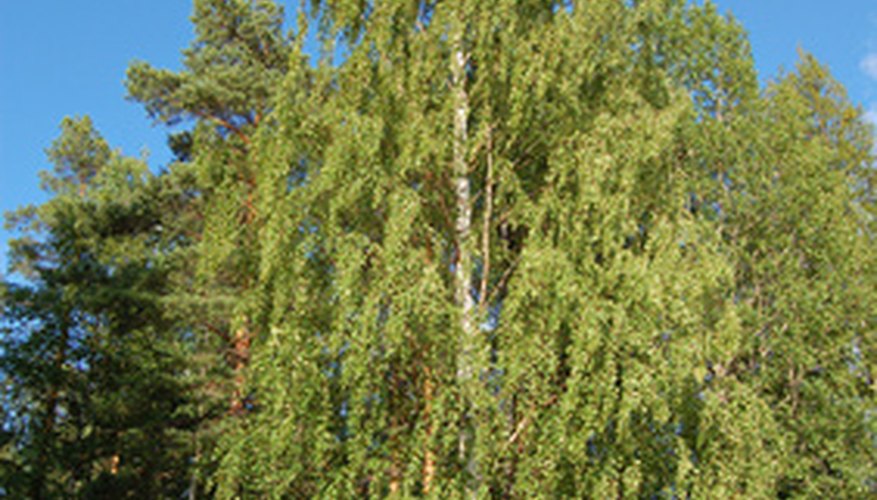Silver birch trees are a deciduous plant of the birch family. Silver birch trees grow in climates indicative of northern hemisphere locations and are native to England. The pollinating season of the silver birch tree typically begins in August and extends throughout October. The pollen of a silver birch tree spreads through the air by wind. Silver birch trees are amongst the highest seasonal allergy-inducers.
Significance
Silver birch trees are in the same family as alders and hazels and are closely related to oak and beech trees, meaning those individuals presenting allergies to trees related to the birch, are predisposed to silver birch tree sensitivity. Allergic individuals who come in contact with silver birch tree pollen react due to chemical histamine releases that occur throughout the body. Histamine leads to increased mucus within the nasal passages and airways, which causes inflammation-related reactions such as congestion, constricted breathing and general discomfort.
Cross-Reactivity
Cross-reactivity means that individuals allergic to a certain pollen such as the silver birch tree pollen may experience allergic reactions when eating foods that share a similar molecular structure because the body mistakes the food for the pollen. Silver Birch pollen has cross-reactivity to an array of fruits including apples, kiwis, peaches, pears, nectarines, cherries, apricots and plums. Cross-reactive vegetables include carrots, celery and potato peels. Hazelnut, Brazil nut and walnut also contain cross-reactive proteins.
- Cross-reactivity means that individuals allergic to a certain pollen such as the silver birch tree pollen may experience allergic reactions when eating foods that share a similar molecular structure because the body mistakes the food for the pollen.
- Cross-reactive vegetables include carrots, celery and potato peels.
Allergy Symptoms
Birch pollen causes hay fever symptoms when inhaled through the eyes, nose and mouth. Hay fever symptoms include itchy and watery eyes indicative of allergic conjunctivitis and allergic rhinitis reactions of, sneezing, runny nose and coughing. Skin irritation, hives and eczema may occur if an individual has skin contact with silver birch pollen. Cross-reactive properties of the silver birch tree cause oral allergy syndrome (OAS) when related foods are consumed. Oral Symptoms include swelling and tickling sensations within the mouth, tongue and throat.
- Birch pollen causes hay fever symptoms when inhaled through the eyes, nose and mouth.
- Skin irritation, hives and eczema may occur if an individual has skin contact with silver birch pollen.
Allergic-Asthma Symptoms
Allergic asthma is brought on by exposure to allergens that cause inflammation of the airways. Silver birch tree pollen may induce allergic asthma reactions when inhaled. Asthma symptoms include coughing, wheezing, shortness of breath, chest tightness and bronchial spasms that lead to attacks. Asthma symptoms are accompanied and exacerbated by birch tree hay fever symptoms of congestion and sneezing, leading to further breathing constriction due to increased swelling of the air passages.
- Allergic asthma is brought on by exposure to allergens that cause inflammation of the airways.
- Asthma symptoms are accompanied and exacerbated by birch tree hay fever symptoms of congestion and sneezing, leading to further breathing constriction due to increased swelling of the air passages.
Treatment
The most effective remedy for silver birch tree allergies is to avoid exposure to the pollen. Sensitised individuals may consider checking the pollen count and avoiding prolonged outdoor activity on high pollen count days. Oral antihistamines combat histamine releases to decrease allergic reactions. Topical antihistamine and corticosteroid ointments provide relief for itching and skin irritation due to contact dermatitis allergy responses. Inhalers and oral asthma medications prevent and relieve asthma symptoms caused by birch pollen irritants by opening the airways.
- The most effective remedy for silver birch tree allergies is to avoid exposure to the pollen.
- Topical antihistamine and corticosteroid ointments provide relief for itching and skin irritation due to contact dermatitis allergy responses.
